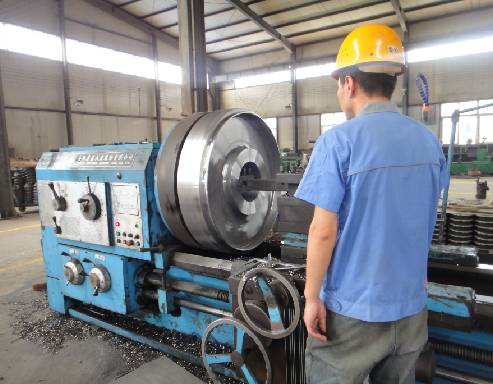 Afrikaans
Afrikaans  Albanian
Albanian  Amharic
Amharic  Arabic
Arabic  Armenian
Armenian  Azerbaijani
Azerbaijani  Basque
Basque  Belarusian
Belarusian  Bengali
Bengali  Bosnian
Bosnian  Bulgarian
Bulgarian  Catalan
Catalan  Cebuano
Cebuano  Corsican
Corsican  Croatian
Croatian  Czech
Czech  Danish
Danish  Dutch
Dutch  English
English  Esperanto
Esperanto  Estonian
Estonian  Finnish
Finnish  French
French  Frisian
Frisian  Galician
Galician  Georgian
Georgian  German
German  Greek
Greek  Gujarati
Gujarati  Haitian Creole
Haitian Creole  hausa
hausa  hawaiian
hawaiian  Hebrew
Hebrew  Hindi
Hindi  Miao
Miao  Hungarian
Hungarian  Icelandic
Icelandic  igbo
igbo  Indonesian
Indonesian  irish
irish  Italian
Italian  Japanese
Japanese  Javanese
Javanese  Kannada
Kannada  kazakh
kazakh  Khmer
Khmer  Rwandese
Rwandese  Korean
Korean  Kurdish
Kurdish  Kyrgyz
Kyrgyz  Lao
Lao  Latin
Latin  Latvian
Latvian  Lithuanian
Lithuanian  Luxembourgish
Luxembourgish  Macedonian
Macedonian  Malgashi
Malgashi  Malay
Malay  Malayalam
Malayalam  Maltese
Maltese  Maori
Maori  Marathi
Marathi  Mongolian
Mongolian  Myanmar
Myanmar  Nepali
Nepali  Norwegian
Norwegian  Norwegian
Norwegian  Occitan
Occitan  Pashto
Pashto  Persian
Persian  Polish
Polish  Portuguese
Portuguese  Punjabi
Punjabi  Romanian
Romanian  Russian
Russian  Samoan
Samoan  Scottish Gaelic
Scottish Gaelic  Serbian
Serbian  Sesotho
Sesotho  Shona
Shona  Sindhi
Sindhi  Sinhala
Sinhala  Slovak
Slovak  Slovenian
Slovenian  Somali
Somali  Spanish
Spanish  Sundanese
Sundanese  Swahili
Swahili  Swedish
Swedish  Tagalog
Tagalog  Tajik
Tajik  Tamil
Tamil  Tatar
Tatar  Telugu
Telugu  Thai
Thai  Turkish
Turkish  Turkmen
Turkmen  Ukrainian
Ukrainian  Urdu
Urdu  Uighur
Uighur  Uzbek
Uzbek  Vietnamese
Vietnamese  Welsh
Welsh  Bantu
Bantu  Yiddish
Yiddish  Yoruba
Yoruba  Zulu
Zulu Փտր . 16, 2025 15:40
Back to list
idler roller types
Idler rollers are pivotal components in various industries, ensuring smooth operation and efficiency in material handling systems. These cylindrical, rotating devices support conveyor belts and maintain their alignment, reducing friction and wear. Understanding the types of idler rollers and their unique characteristics can significantly impact the performance and longevity of your conveyor systems.
Material composition and technological advancements further diversify idler roller types. Steel and polymer rollers are the most prevalent choices. Steel idlers are favored for their durability and ability to withstand harsh environments, providing long-term stability in heavy-duty operations. Conversely, polymer idlers offer a lightweight alternative that is resistant to corrosion and noise, suitable for industries prioritizing energy efficiency and reduced operational noise. Innovation in idler technology has introduced self-cleaning and anti-static idlers. Self-cleaning idlers are engineered to avoid material buildup, thereby reducing maintenance frequency and preventing damage caused by trapped debris. Anti-static idlers are crucial for operations involving combustible materials as they prevent static charge accumulation, highlighting them as an indispensable component in upholding safety standards. The expertise required in selecting the appropriate type of idler roller involves a thorough understanding of the application requirements, environmental conditions, and specific operational demands. Consulting with industry experts provides insights into achieving optimal configurations that balance cost-efficiency and performance. The authority in the field lies with manufacturers and suppliers who have refined their idler roller designs over decades, incorporating cutting-edge materials and technologies into their products. Trust in these authoritative sources is built through the provision of high-quality, durable rollers and ongoing technical support, ensuring customers receive products that not only meet but exceed their expectations. Incorporating the right idler rollers into your material handling systems not only heightens operational efficiency but also safeguards your investment in conveyor belt infrastructure. Understanding the nuances of each idler roller type enhances your system’s resilience, proving invaluable in supporting the seamless flow of materials across industries.


Material composition and technological advancements further diversify idler roller types. Steel and polymer rollers are the most prevalent choices. Steel idlers are favored for their durability and ability to withstand harsh environments, providing long-term stability in heavy-duty operations. Conversely, polymer idlers offer a lightweight alternative that is resistant to corrosion and noise, suitable for industries prioritizing energy efficiency and reduced operational noise. Innovation in idler technology has introduced self-cleaning and anti-static idlers. Self-cleaning idlers are engineered to avoid material buildup, thereby reducing maintenance frequency and preventing damage caused by trapped debris. Anti-static idlers are crucial for operations involving combustible materials as they prevent static charge accumulation, highlighting them as an indispensable component in upholding safety standards. The expertise required in selecting the appropriate type of idler roller involves a thorough understanding of the application requirements, environmental conditions, and specific operational demands. Consulting with industry experts provides insights into achieving optimal configurations that balance cost-efficiency and performance. The authority in the field lies with manufacturers and suppliers who have refined their idler roller designs over decades, incorporating cutting-edge materials and technologies into their products. Trust in these authoritative sources is built through the provision of high-quality, durable rollers and ongoing technical support, ensuring customers receive products that not only meet but exceed their expectations. Incorporating the right idler rollers into your material handling systems not only heightens operational efficiency but also safeguards your investment in conveyor belt infrastructure. Understanding the nuances of each idler roller type enhances your system’s resilience, proving invaluable in supporting the seamless flow of materials across industries.
Next:
Latest news
-
The Unrivaled Performance of Polyurethane Pulleys in Industrial ApplicationsNewsAug.25,2025
-
The Critical Role of Drum Lagging in Conveyor SystemsNewsAug.25,2025
-
Navigating Industrial Efficiency: The Critical Role of Conveyor PulleysNewsAug.25,2025
-
InIntroduction to Advanced Pulley Lagging SolutionsNewsAug.25,2025
-
Industry Trends in Pulley Lagging TechnologyNewsAug.25,2025
-
Revolutionizing Conveyor Reliability with Advanced Rubber Lagging PulleysNewsJul.22,2025
OUR PRODUCTS





























